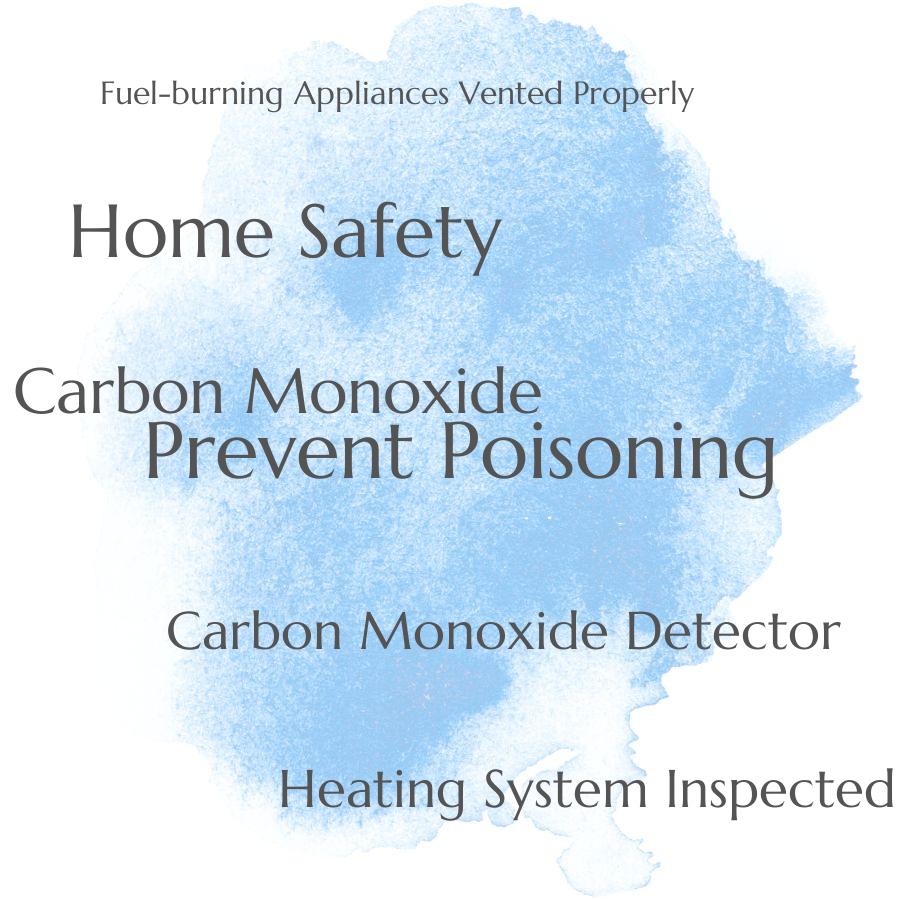To prevent carbon monoxide poisoning in your home, make sure to install a carbon monoxide detector and regularly check for any potential leaks from gas appliances. Additionally, ensure that all fuel-burning appliances are properly vented and maintained.
Carbon monoxide poisoning is a serious health risk that can occur in any home. It is important to take steps to prevent carbon monoxide poisoning in your home and protect yourself and your family from the potentially deadly effects of this invisible gas.
In this blog post, we will discuss how to prevent carbon monoxide poisoning in your home and what you should do if you suspect carbon monoxide exposure.
Install a Carbon Monoxide Detector

Carbon monoxide detectors are devices that detect the presence of carbon monoxide gas and alert you when it reaches dangerous levels. They can be battery-operated or hardwired into your home’s electrical system, and should be placed near bedrooms, living areas, and other places where people spend time.
It’s important to check the batteries regularly and replace them as needed. Make sure to test the device monthly to ensure it is working properly.
If you have any questions about installation or maintenance of a carbon monoxide detector, contact a professional for assistance.
Have Your Heating System Inspected Annually
Carbon monoxide is a colorless, odorless gas that can be produced by faulty or improperly maintained heating systems. An annual inspection of the system can help identify any potential problems before they become dangerous.
During the inspection, a qualified technician will check for any signs of wear and tear on the system, as well as inspect all components to ensure they are working properly. The technician may also test for carbon monoxide levels to make sure there are no leaks or other issues that could lead to poisoning.
Taking these steps every year can help keep you and your family safe from carbon monoxide poisoning in your home.
Make Sure All Fuel-burning Appliances Are Vented Properly
This includes any gas or oil furnaces, water heaters, stoves, fireplaces, and other similar appliances. These appliances should be installed according to the manufacturer’s instructions and checked regularly for proper ventilation.
The venting system should be inspected annually by a qualified technician to ensure it is working correctly and not blocked or leaking. You should never use an oven or stovetop as a source of heat in your home as this can lead to dangerous levels of carbon monoxide buildup.
Taking these steps will help keep your family safe from the dangers of carbon monoxide poisoning.
Never Use a Gas Oven to Heat Your Home
This is because gas ovens are not designed to be used as a heating source and can produce dangerous levels of carbon monoxide. Carbon monoxide is an odorless, colorless gas that can cause serious health problems or even death if inhaled in large amounts.
When using a gas oven for cooking, make sure the area is well ventilated and that you have working carbon monoxide detectors installed in your home. Never use a gas oven to heat your home as it could lead to deadly consequences.
Avoid Running Cars or Generators in Enclosed Spaces
When a car or generator is run in an enclosed space, the carbon monoxide produced builds up and can cause serious illness or even death. To prevent this from happening, it is important to never run cars or generators inside garages, sheds, basements, homes, tents, campers, trailers and other enclosed spaces.
If you must use a car or generator indoors for any reason (such as during an emergency power outage), make sure there are windows open and fans running to ensure proper ventilation of the area. Install carbon monoxide detectors throughout your home so that if levels become too high they will alert you before anyone becomes ill.
Open Flues When Fireplaces Are in Use
The flue is an opening at the top of the chimney that allows smoke and other gases to escape from your home. If you do not open the flue, these gases can build up inside your house and cause carbon monoxide poisoning.
Carbon monoxide is an odorless gas that can be deadly if inhaled in large amounts over time. Opening the flue will allow any smoke or gases produced by burning wood or coal to escape outside instead of building up inside your home.
This will help prevent carbon monoxide poisoning and keep you and your family safe.
Don’t Idle the Car in an Attached Garage
Carbon monoxide (CO) is a colorless, odorless gas that can be deadly if inhaled in large amounts. When you idle your car in an attached garage, the CO from the exhaust can quickly build up and become dangerous.
This is especially true if the garage has poor ventilation or no windows. To prevent carbon monoxide poisoning, it is best to avoid idling your car in any enclosed space such as an attached garage.
If you must enter or exit a building through an attached garage, make sure to open all doors and windows before starting the engine and keep them open until after you have left the area.